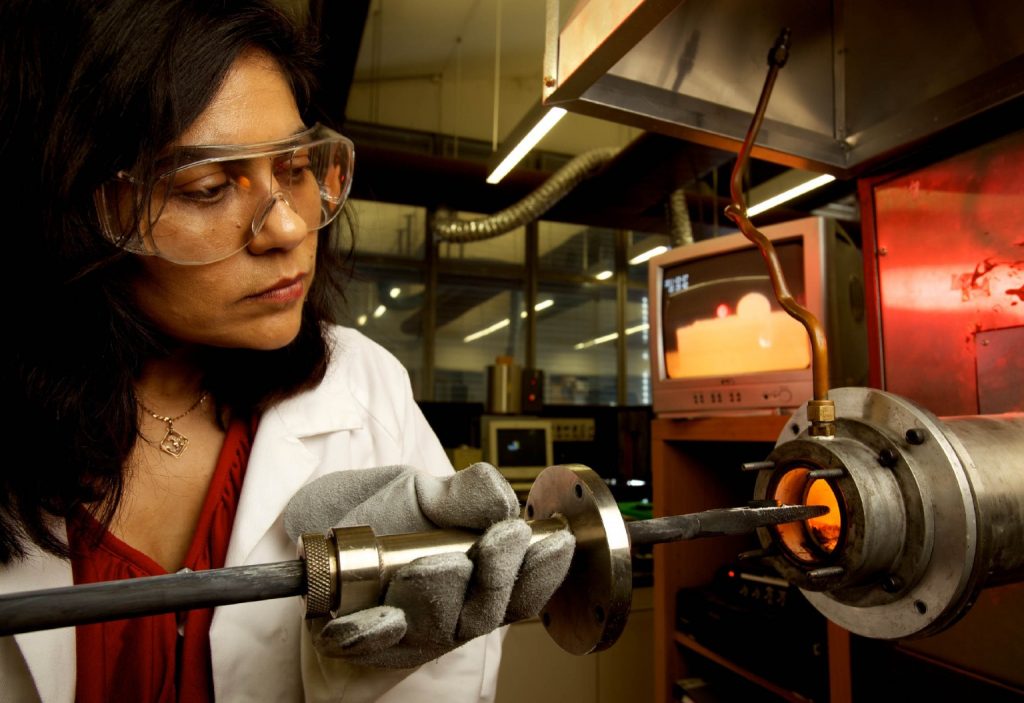International Women in Engineering Day is 23 June, and this year the focus is on celebrating the innovators and inventors who are helping to build a brighter future — including by bringing more women and girls into the profession.
“You can’t be what you can’t see.”
It is an often-quoted phrase that rings true for Dr Mariam Darestani, Senior Lecturer in Mechanical Engineering at Western Sydney University. Darestani herself initially got into chemical engineering because she could see women in leadership positions in her home country of Iran, where nearly 70 per cent of university STEM graduates are women.
However, for women and girls in Australia today, she says, the situation is quite different.
Women make up just 16 per cent of university students studying engineering and 13 per cent of the engineering workforce in Australia. This means there aren’t always visible role models for women to follow.

“As it stands now, a female engineering graduate will go into an environment where she won’t see many women,” Darestani says. “I think there’s a perception that engineering is a ‘difficult’ job or not necessarily suitable for women. We need to show women and girls — from primary school up … If our girls can see someone else doing it, they’re going to think, ‘I can do it, too.’”
First-of-its-kind research released today by Engineers Australia exploring the barriers to women entering the profession supports the idea that more must be done to showcase the incredible work of engineers. The study found the biggest barrier to girls choosing to study engineering was a lack of familiarity with engineering and what engineers do.
Engineers Australia Chief Engineer Jane MacMaster FIEAust CPEng said certain stereotypes, such as the image of engineers in hard hats and hi-vis, can also deter girls from considering engineering as a career path.
“We need to bust some myths about what an engineer is. Engineers can sit all day in front of a computer, they can work outside, or anything in between,” she says. “Ultimately, engineering is a profession that allows you to contribute to making the world a better place.”
MacMaster says she encourages all female engineers to consider how they can promote the profession to the next generation.
“We know that sharing stories about engineering work with young people in your family and friendship circles is a really powerful way to raise awareness about engineering.
“Using storytelling to help more girls understand what engineering is, is what the research tells us is the most important thing that we can do.”
The responsibility to attract and retain female engineers isn’t women’s alone. Their male counterparts have a role to play in championing and supporting women in the workplace, Darestani says.
“What I’ve seen in my career is that women aren’t always that good at putting their hand up and being confident. There is sometimes the feeling that if you get something wrong, it will be related to the fact that you’re young and female,” she says.
“I think we need to go beyond mentorship and have a kind of sponsorship — a ‘he for she’ type of thinking — where male engineers support their female colleagues.”
Encouraging more women and girls to see engineering as a viable career path is vital to ensure the best outcomes — both for the profession and society as a whole. “As women engineers, we often bring a different perspective to the problem solving and design part of engineering,” MacMaster says.
“When we’re talking about designing things such as seat belts or public transport systems, we need different sectors of society represented in the engineering process. This ensures we design systems that humans of all shapes, sizes and backgrounds can use safely and productively.”
Diversity is important to ensure the solutions generated by engineers are fit for purpose, and for the people who use them.
“We should make sure that every team is diverse, from cultural diversity to gender diversity and people living with disability,” Darestani says. “If you’re going to design innovative products for the future, it’s something you need to consider.”
